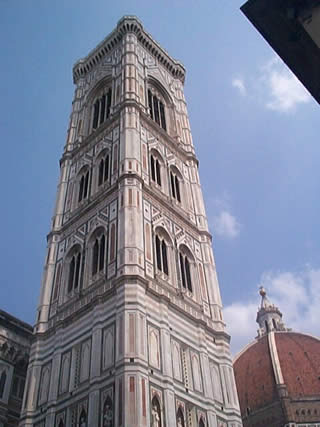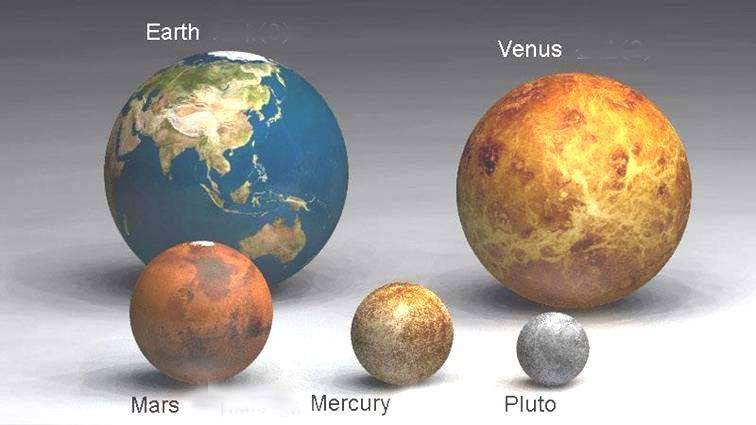Solar system in the Park
-
@unknownuser said:
I think my problem with this type of model is the inaccuracy... while it's beautiful... in reality would not the planets be on the other side of the park? and would the whole piece be for educating children? well I'm prolly just anal... it is a beautiful model though...
In fact they have built this to scale in Helsinki, with a much smaller Sun and planets, and they still don't fit in a park, but are scattered over the region. The Saturn is about the size of a baseball, it is near where I work...
Anssi
-
photos Anssi... that is awesome...
-
I, for one, don't think it is neccessary to have the planets and wot-not to scale. It's a park - not a museum / planetarium. A park is playful, less formal and somewhat informative (in this case, anyway).
Having said that, I don't think one has to be so blatantly literal about the whole thing, putting orbs down and having this odd ball above the pond.
Rather use the pond as the sun, the paving variations representing the various orbital paths are fine, have different objects (with some kind of link to the name of the planet or the planet itself somehow) in the various places where you'd find that planet / moon / whatever. To me, that will be way more interesting than having these orbs all over the place.
-
I for one really love the idea. I don't mind the scale variance. Sometimes its valuable to educate through one's imagination than the reality. Plenty of ideas come to mind.
- The planets would be in their relative orbit (which is pretty flat, except for Pluto) hovering off of the ground. The lines on the ground would indicate their orbiting path.
- Each planet has a placard that includes planetary facts. I'd put them on the ground and connecting somehow to the orbit indicators.
- A placard at the center next to the Sun would explains the scale differences.
- Pluto because its orbit is off axis (more so than the rest) could be high off the ground, and nearly untouchable, adding a air of reach and distance it truly has.
- You could also pick an important time in history that would mark the planets position.
I love it!
-
Where is this concept going to be at?

poster: Invader ZIM
-
Yes, I agree with Monsterzero. While it does contain inaccuracies, it can probably be more defined as art, such as a bronze statue of balls and squiggly lines. The fact that the art is made from the solar system doesn't mean its wrong or inaccurate. What if the planets were made square or the sun made from one of those giant stone balls that sit in water and has water cascading down it like at DisneyLand? Adding facts as MZ has mentioned would make it a learning experience too. Perhaps plaques set into the stone or something.
To me, this is very creative and unique and I would find it very interesting as a piece of art. I wouldn't find myself measuring the distance from the earth to the sun and trying to figure out the scales just to see if they are off. I would find myself sitting on a planet (especially if they are square) and taking in some quiet time.
-
@unknownuser said:
Where is this concept going to be at?

I don't think this is a real project, judging by the trees etc. around. This is probably just someone toying with a thought and visualising it.
-
@todamgood4u said:
...I wouldn't find myself measuring the distance from the earth to the sun and trying to figure out the scales just to see if they are off.
todamgood,That's really very nice, but we're not talking about this model being just slightly or subtlely out of scale--so that you'd have to measure it to determine whether it's accurate. It's really way, way off.
Judging by the image, let's say that the Earth, the green ball, is about two feet in diameter. At that scale, the Sun would be over 218 feet in diameter and would be almost four-and-a-half miles away. At that same scale, Pluto would be 4.33 inches in diameter and 175 miles from the sun.
So please, let's not mistake grossly inaccurate and unscientific misinformation, which could seriously confuse both children and adults, for "artistic license." I would like to think that we can express ourselves artistically without plunging ourselves back into the Dark Ages academically.
jessalba, please do not be discouraged by this; make it a challenge to push both your artistic and intellectual skills to the next level.
-Gully
poster: Gully Foyle
-
A bit of reference:
-
Gully, quit being such a wet blanket. I know engineers HAVE to be precise, but that doesn't apply to all other fields of life.
-
@unknownuser said:
Gully, quit being such a wet blanket. I know engineers HAVE to be precise, but that doesn't apply to all other fields of life.
Well, Juju, I think one of the most wonderful and fascinating things about our universe is how big it is and how small we are.
I think kids deserve to be enlightened about how magnificent the universe is, not to be misinformed because of the vanity of adults who wish to exercise their artistic license at the expense of intellectual integrity.
-Gully
poster Gully Foyle
-
I think it is a great feature in a park -- even with the relative scales all wrong. The textbooks we had as children had the scales all wrong too. One interesting addition would be to engrave the story about the correct scales into the top of the little wall around the sun. That way the viewers reading the words would have to revolve around the sun too. As they do they become informed about the relative vastness of space and have their imaginations further provoked.
Regards, Ross
-
and what about PLUTON ?
no planet any more

-
A bit of reference:
I've been to mars and I swear it's bigger than that... I would venture to bet that if checked the references on that site are a little off... I thought 386 earths fit into Jupiter... or was that the sun? either way it just seems somewhat off...
if you'd like to visit mars or any planet for that matter, for free and perhaps even build your own spaceship in SU and fly it to mars see this link and research the simulator...
Free Space Simulator/Engineering Testing
http://orbit.medphys.ucl.ac.uk/ -
@unknownuser said:
You describe a struggle that has been going on for many years Gully. You are treading on very soft feet, for those in the battle have contributed some of the most profound works.
I think you need to explain how intellect is connected to the proccess of creation and what is "intellectual integrity" to help us understand your view.
mh,
I'm not going to spend much time on this, since, frankly, I don't really know what you're trying to say. Is the struggle to which you refer supposed to be between artistic expression and factual accuracy? Are you saying that artists' feet are soft? What does that mean? What battle?
You ask how intellect is connected to creation? Are you serious? If our buildings and bridges are to stand rather than collapsing, if airplanes are to fly and ships to float, if prose and poetry are to inspire and edify rather than spew forth as inane gibberish, intellect and creativity must be partners, not adversaries. What possible creative endeavor can succeed without intellect behind it? You must know your tools, know your medium, and know your audience, or, as an artist, you must stand paralyzed, silent, and helpless.
Insofar as the present case is concerned, with the model of the model of the solar system, presumably the objective here is to teach. So to teachers, I would say the same thing that Hippocrates said to physicians: first, do no harm. If you are going to teach, do not misinform.
Are you still unclear regarding my view?
-Gully
poster: Gully Foyle
-
For me, a work of art works when it inspires. And reading thru this thread, this piece must be art! (Seems, considering the now technical discussion, it has also taught...as art will teach :`)
Way to go Monika (right?), and best, Tom.
-
Reading this thread I 've been thinking of "art" and "accuracy" but haven't found the solution. Found this dude however, who must have been insane and couldn't have been an artist if we take accuracy a principal element of art:

I said to myself "well, this guy surely couldn't have built a single shed..." but then:

NowI'm confused... Who the hell was this guy called Giotto? An out-of-scale painter or a brilliant architec? Until this topic I used to love his works - now he's becoming suspicious...

-
well I think that modelhead is incorrect in his assumption that man found the wheel or made it before he planned it... if he made it... he drew it on a wall or in the dirt with his finger before he made it... or he made a smaller model of it...
on gaieus' note... I'm not sure what the two pieces have to do with each other... is the first picture supposed to be his plans for the building? because I would doubt that...
to me the art of architecture follows form... it is useless if it does not "work" so that is the first rule of the medium, and also the challenge therein... because we strive for different materials that allow us to express ourselves further and further...
in getting back to this threads base... there is an accepted interpretation of most things that are difficult to describe otherwise... a simple google image search, shows us that there is a recognized standard in symbology to describe our solar system even though it is out of scale... and you'll even recognize the examples from high school and such... because it is impossible to visually express the issue in a real scale, you must imply it...
that is my advice to our modeler of the solar park... find some way to imply the shear scale of the system, even if you do not portray it in form... perhaps changing scale between each planet and finding a way to portray that such as different sized mediums between paths...
anyway... a beautiful idea, and a great topic for the discussion of architecture...
-
Kriss,
What I was trying to express here was that when you simply cannot "real scale" visualize what you would like to show, there indeed can be some kind of abstract way to do it. Giotto's concept was that the buildings (or even nature) he painted were just symbols trying to put their peolpe into some kind of a scene. Obviously this comes from very strong medieval symbolism although he can also be taken for some early renaissance master (but perspective was only "invented" about a century later).
Back to the original topic - if we wanted to precisely (to-scale) visualize the Solar system, it would just simply be impossible for the things would be so small and so far from each other that they wouldn't give a small child any kind of a clue what's going on (he/she would probably even forget about what they are visiting by the time they get to Pluto).
Thus is the solution not to do the thing at all?! Certainly there could be some (or a lot of) changes in the model but I still like the idea. Antique masters visualized the Solar system (and the Universe) by depicting gods and constellations personofied - though they were pretty much aware that it didn't really look like that. I still also like that idea.Maybe I am more poetic kind of a soul than others but that is the point having a forum like this - learning each others' ideas and learning how to understand others' minds.
Thanks for all contributors to this thread - I've learnt a lot from all.
-
Gully, I'm not going to try to make an engineer understand (proper) design, aesthetics and such - from experience it just won't work.
I don't want this thread to become a flame war so I'm going to close it. Sorry "jessalba" for closing your thread, I really like your attempt and the potential it has that can be developed.
Advertisement








